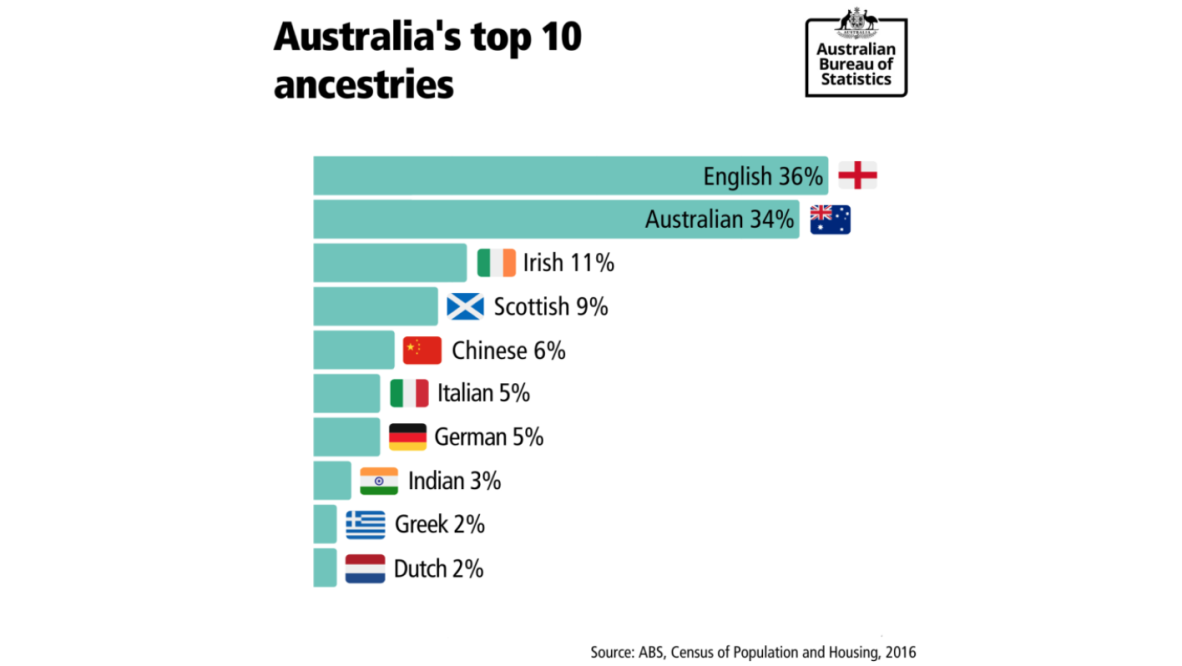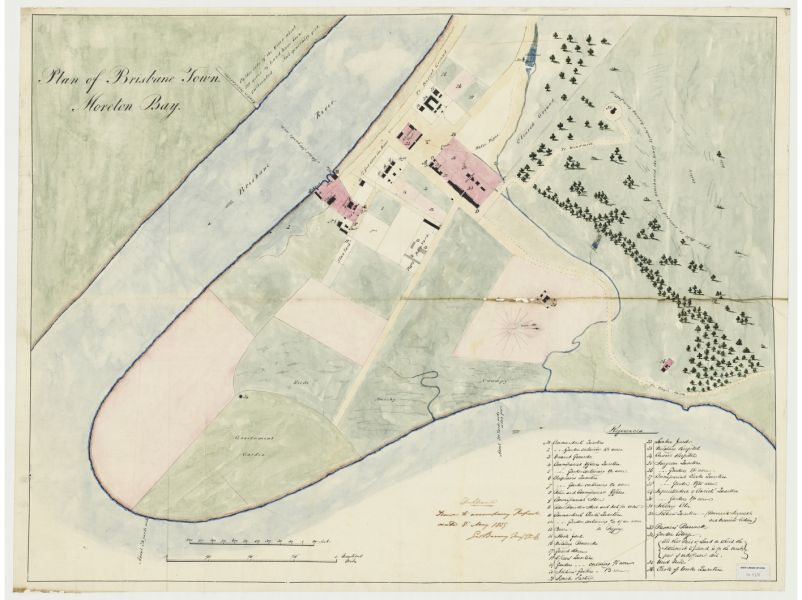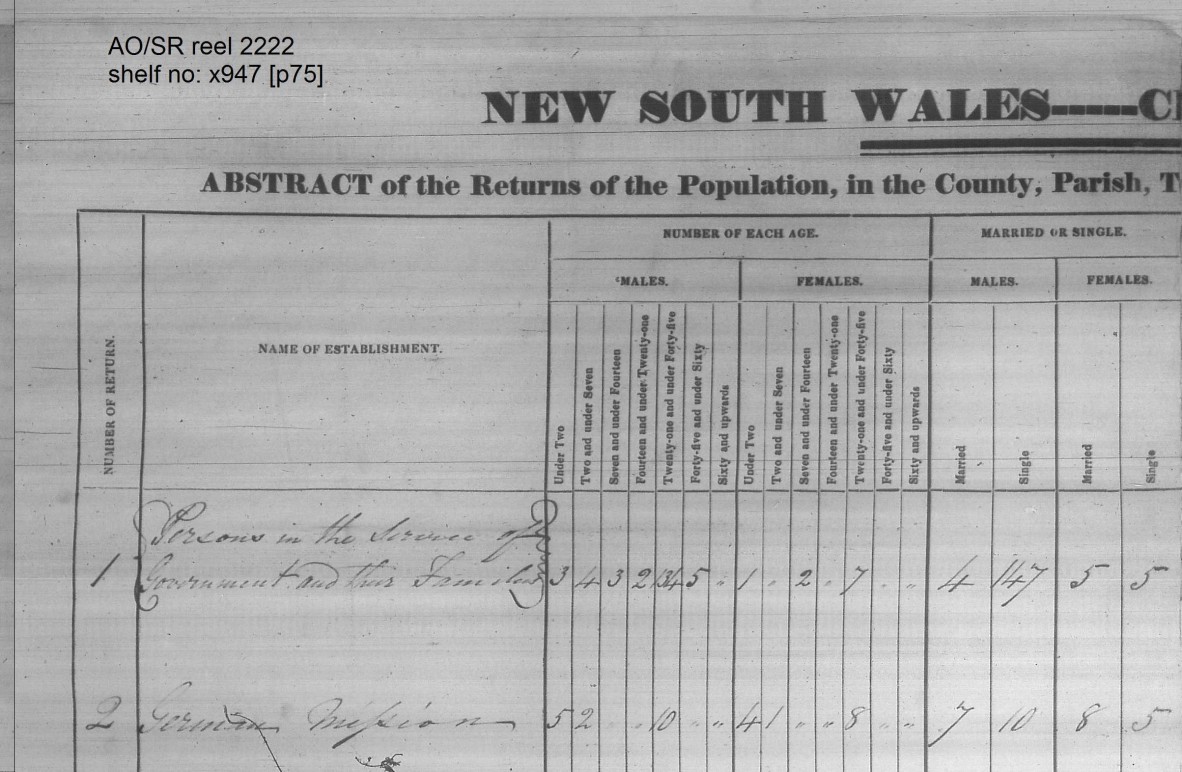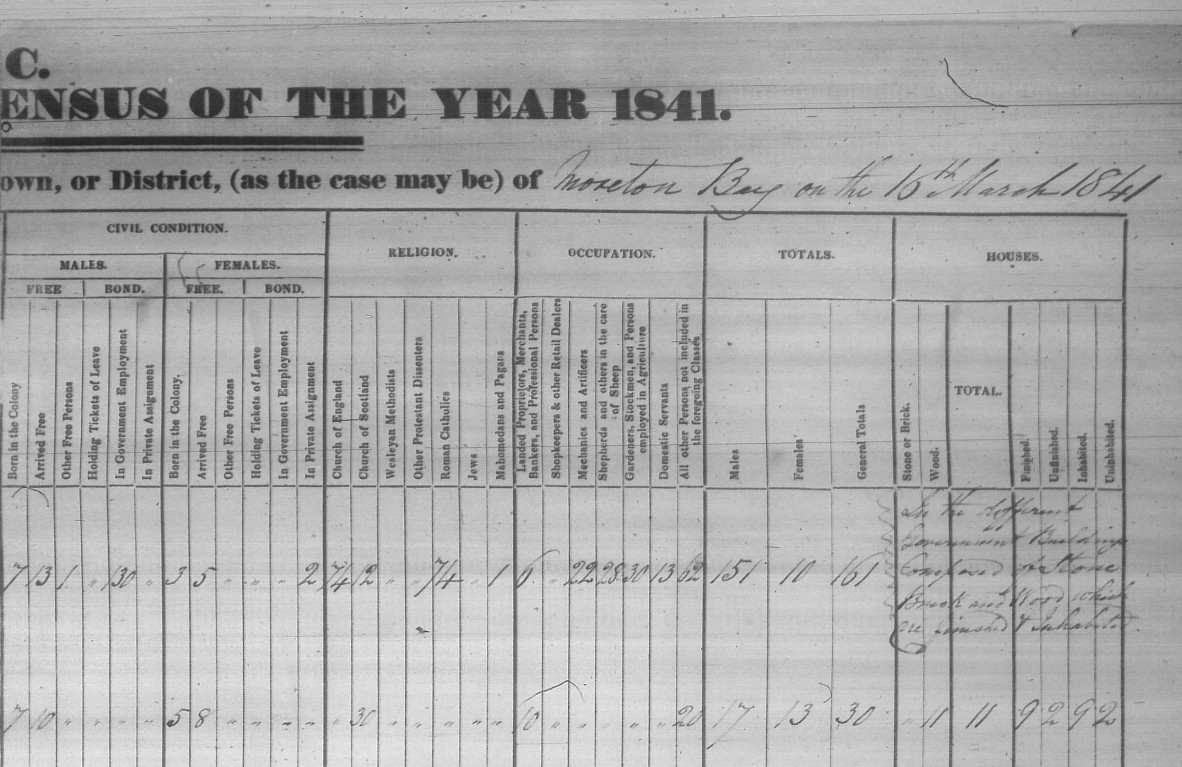2021 Census in the time of COVID-19 and cyber warfare, with reflections on Brisbane’s 1841 census
By Stephanie Ryan, Research Librarian, Information and Client Services | 5 August 2021
It’s on again: the complex challenge undertaken by the Australian Bureau of Statistics to count every person and home in Australia. The Census of Population and Housing as it is formally known, poses a raft of questions including our age, country of birth, religion, ancestry, language used at home, work and education, all of which we are all required to answer truthfully. There is then the task of creating from the answers, plans for the future needs of a richly diverse population. The Australian Bureau of Statistics tells us that we all need to make our needs visible and that ‘Every stat tells a story’.

Bar chart of Australia's top 10 ancestries from Census 2016. An element of Australia’s diversity.
The 2021 Census will be different
The 2021 census will include the first change of subjects since 2006, covering various topics, including two new questions about illnesses and military service. We will not be asked about the Internet because of the uptake in mobile devices. There will be no COVID-19 related questions despite the huge and unpredictable impact it has had on our economic systems, working and social life as well as the infrastructure behind this.
There will be little personal contact between the public and census collectors and the challenge remains in reaching everyone without internet access or the digital dexterity to navigate the internet, or those with no fixed address across the vast Australian continent. The census will be answered mainly, but not exclusively, online in 2021. Although census night is 10 August, we can answer the census questions as soon as we receive instructions in early August if we know where we will be on the night of 10 August.
This should avoid the massive crash that happened in 2016 as many people began to fill out their online forms at the same time, complicated by the problem of cyber-attacks from beyond our borders. ‘Ethical hackers’ and cyber-security agencies have been hard at work to rebuild and secure the online system against similar attacks. The census is a tremendous undertaking with significant implications for an effectively planned future.
Moreton Bay Census 1841

Map of Brisbane Town, Moreton Bay | State Library of NSW
George Barney’s 1839 map showing the small Brisbane settlement as the convict colony was closing down.
By the time of the next census in 2026, Brisbane, and with it the origins of European settlement in Queensland, will have celebrated its bicentenary. It is worth reflecting on the census taken at Moreton Bay on 16 March 1841, then part of New South Wales, a much smaller, less visionary proposition. The tiny settlement was at a pivotal point. The penal colony was officially closed in 1840 and preparation was underway to open the area to free settlement with land to be available for sale in 1842. Some convicts remained to tend the stock and to assist surveyors who were laying out the streets and roads. The first two marriages recorded in Moreton Bay had been in 1839, those of surveyors, James Warner and Robert Dixon.


1841 Census: Moreton Bay
NSW State Archives and Records reel 2222
The community was required to answer only five questions, related to their age, marital status, origin (civil condition), religion and occupation. Unlike other parts of New South Wales, the Moreton Bay population of 191 people was not recorded in individual households. They were divided into two groups. The first was ‘Persons in the service of the Government and their families’ (161). The second was the ‘German mission’ (30), the first free settlers in Moreton Bay whose aim was to Christianise the Aboriginal peoples. First nations peoples were not included in the census (Aboriginal and Torres Strait Islander peoples, were not fully counted in the Census until 1971). The majority of males (147) were single and most of those (130) were bonded in government service i.e. had a convict background. The largest number of the population was between the ages of 21-45 years: 144 males and 15 females. There was no one over the age of 60 but there were 8 children under the age of two.
Of the seven categories of religion, the community fell into four main groups: Church of England (74), Church of Scotland (12), Roman Catholics (74) and Mohammedans and Pagans (1), not the diversity of the general population then or today. Even though the German missionaries were not Scottish Presbyterians that is where they were placed as the Census document that did not otherwise account for them. Only 22 individuals had been born in the colony. There were no shopkeepers or retailers. Most were involved in agricultural, pastoral, surveying or maintenance work of some kind. It is doubtful that any complained of being invisible, that their future needs were not taken into consideration or that this Census was an inadequate planning document for Moreton Bay. Governor Gipps thought so little of this remote place with a limited future that Surveyor Dixon’s 1840 survey allowing for streets of 28 metres width was reduced to 20 metres. Gipps saw Brisbane “as simply an ordinary provincial settlement which would not need grand avenues” (cited in Urban Nation: Australia's Planning Heritage p 89, by Robert Freestone).
Today, the census is very much a future-focused document that must truly reflect the needs of a diverse Australian community. The census is stripped of personally identifiable information (PII) which reaffirms that our privacy is protected and in turn encourages us to give honest answers to the questions raised.
There is, however, an opportunity for those who wish to leave a family history legacy to select the option to have their full and complete census information saved for future generations, securely held by the National Archives of Australia before releasing it publicly in 99 years.
Find out more
Check the Australian Bureau of Statistics' frequently asked questions
Find out about what historical Australian censuses are available
Read blogs about the census
More information
Ask us - /plan-my-visit/services/ask-us
Library membership - /get-involved/become-member
One Search - http://onesearch.slq.qld.gov.au/
Comments
Your email address will not be published.
We welcome relevant, respectful comments.